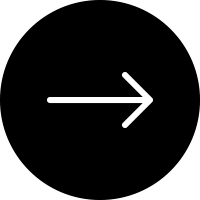Women Seeing Women
One might simplify this by saying: men act and women appear. Men look at women. Women watch themselves being looked at…The surveyor of woman in herself is male: the surveyed female. Thus she turns herself into an object – and most particularly an object of vision: a sight.
For centuries, the female body has been dehumanized and used as an object to serve others. As highlighted by John Berger and his colleagues in the seven essays that comprise the book Ways of Seeing, there is a historical precedent for men to assert power in the field of public imagery, filtering everything the world sees through their own observations and interests. With today’s culture of technology and internet, our world is a constant barrage of images and messages that we must sift through in order to find our own truths. At the end of the day, women rarely have any honest representations to call their own. Women Seeing Women is an exhibition inspired by the notion of reclaiming the male gaze. In a world dominated by the perceptions of men, Women Seeing Women exists in order to rebalance the scale. This is the female gaze. Each of the five selected artists are women who have created a body of work out of portraying females, either themselves or others, and the perceptions working against them. The most significant connection between the works of these vastly different artists is their thematic use of gender ideology and the politics surrounding womanhood.
The surreal additions to reality in the paintings of Ilana Savdie call upon on how we interpret each other through the internet. Her use of commercial design to identify the subtle marketing all around us and her honest depiction of real women creates compositions that awakens the viewer and allows them to really see her subjects. Margaret Roleke expands painting into the realm of sculpture with her use of painted children’s toys in reliefs and wall hangings. She uses toys meant for both boys and girls in order to convey the early militarization of young boys and the premature sexualization of young girls. While her work is not exclusive to the effect of mass media on women, it addresses an extremely important and frightening foundation for how girls are raised to perceive themselves. Drawing upon the idea of public portrayal, Clarity Haynes’ series Breast Portrait Project provides striking observations of women that are rarely looked at. Instead of hiding the sick, wounded, and elderly, Haynes puts them on display with pride and beauty. She expresses what we should all hear more often: that each of our bodies deserves love no matter what. Harboring the more conceptual styles of On Kawara and Lee Lozano, Liliana Dirks-Goodman creates self-portraits without ever showing her face. These are portraits of her internal dialogue, charts and graphs converted from the words of her journals that boldly show the pressures of professional success on motherhood on the modern woman. Julie Nymann takes the term “self-examination” quite literally when she places her own body under a microscope and forces the audience into an unknown world of observation. In “eye of the beholder,” Nymann deals directly with the concepts addressed by Ways of Seeing by toying with the viewer and switching around the roles of subject and surveyor.
Dirks-Goodman and Nymann both self-reflect to a degree that pushes the viewers’ neurosis, allowing us to reconsider what it is that we see when we look at ourselves. Savdie and Haynes draw upon but distort the traditions surrounding portraiture in order to highlight what is lacking in such an important art historical practice. Roleke stands in line with the strong messages of these artists but sets herself apart by using material to open the viewer’s eyes to societal issues. All five artists demonstrate the power and range of voices that are promoting the female gaze.
The combination of large scale portraiture and sculpture with smaller works of different mediums is meant to create a juxtaposition between outward portrayal and inner reflection. This exhibition aims to unearth some of the contrary opinions and dialogue occurring in contemporary feminism. Overall, Women Seeing Women is intentionally large and slightly overwhelming in order to portray a sense strong sense of female presence. Instead of walking into a gallery and viewing women put on display by men, visitors have a chance to see women as they want to be seen. 1 Berger, John. (1972): Ways of Seeing; p. 47











